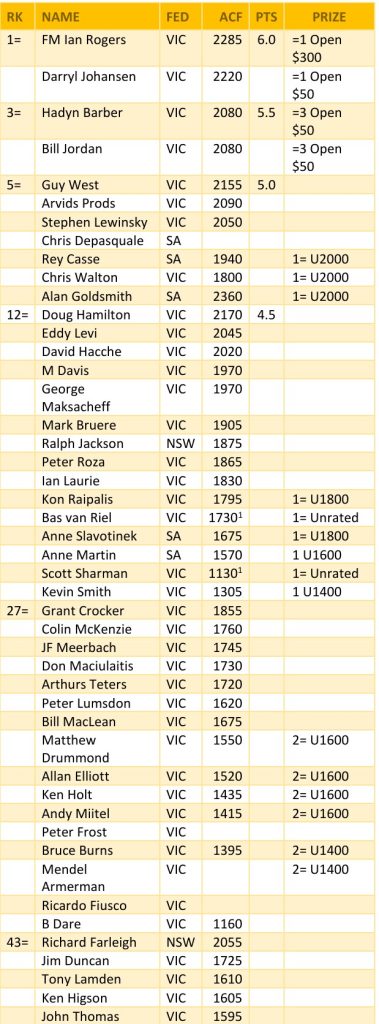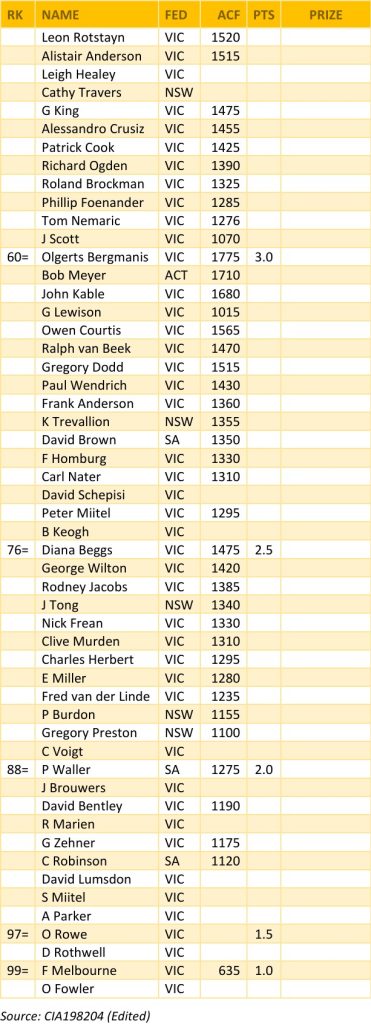Back in the day, before computers and printers were readily accessible to all, the Director of Play in any sizeable chess tournament faced the intense challenge of producing and keeping records for each participant on their own specific pairing card. The overall results were displayed on a blackboard, updated after every round. The individual results could be cross-checked by referring to the two player cards in question.

Top seed, GM Ian Rogers, drew with fourth seed, IM Stephen Solomon, in Round 4 and accumulated 6.5 points to reach an equal first position after Round 7.

So, the Director of Play’s job was not an easy task: The results in the 1984 Begonia had to be filled in for each of seven rounds, player card by player card (92 of them that year), before racing to the blackboard to write up the completed round’s results, manually working out the next round’s pairings and writing them up as well! It must have been a nightmare!

The added task for the sole DOP in 1984 (for comparison there were 6 arbiters at the 2025 Begonia Open!) was to supervise the numerous clocks and multiple time controls. The modern DGT clocks and new time controls make for an arbiter’s dream as no intervention is required at all. There were only the good old wind up BHB analogue clocks (like the Teters Tournament clock shown above), which had to be reset after each time control. The first control was always 40 moves in 90 minutes then generally followed by 20 moves in 20 minutes and then 10 minutes to finish the game. Some years then went to adjudication and that was fortunately a short-lived nightmare. Kevin Perrin reminisced: “I can recall running between the boards in the time scrambles to see which clocks were about to fall before they had to be reset. I also desperately tried to record the moves for the top few games in the case there was a dispute. Some players stored up there moves and tried to blitz their opponents as no recording was required in the final 5 minutes. There were no second arbiters so I did occasionally have to ask for some help on the distant lower boards. Oh, those were the days!”


